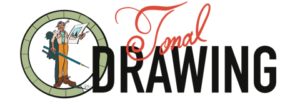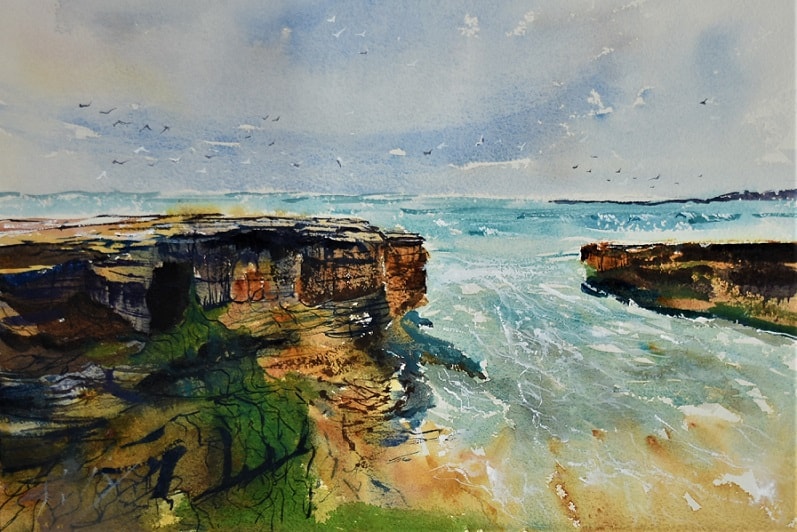
Starting to paint is always exciting when you plan, but it becomes more frustrating when you have started it already. Thousands of questions start gathering in your mind, and you will always wonder, in the sea of questions, how do you do it!
It is more challenging when you are a working person and perhaps never studied in art school! And very hesitant about if it is the right decision to go on that path!
Where do you begin ?
Firstly, I need to tell you that this is not a how-to process. Instead, this is a complete guideline for an adult to follow the path to achieving the result: to be able to paint in watercolor freely and look for the next steps.
In the end, you will know what exactly you will need to do if you are an adult who did not go to school or any art but want to pursue watercolor as a hobby or even a career.
Many of us, including me, did not go to art school, did not do any Bachelor of Fine Arts or anything related to that. However, we have that passion for art, we have a passion for watercolor, we get amused to see the work of water and pigments on paper, and we grow a love for watercolor painting.
At this stage, many of us do not know where to go, what to do, should we go to art school? Or workshop? Alternatively, buy a book or learn from Youtube. I will discuss all these questions to make your path well structured.
I will tell you how I started and became a professional artist.
So, going back to the topic, we begin as a beginner. Nevertheless, there is a “But”. You do not need to start drawing shapes, and colors like a young kid will do. If you are a mature person, your thought process and understanding will also mature. Even if you do not draw well enough as an eight-year-old, you still have a better chance of success because of your thought process and understanding of art and aesthetics. This is your plus point. So, as it is said, better late than never.
How to start painting
Let us talk a bit about me and how I started.
I used to paint occasionally when I was in high schools, like painting a portrait of a famous player or an action hero. This is what most the young aged will do. And understanding of art to me was picture-perfect. It should look like a photograph.
I graduated in Computer science and started doing coding software since then. I was under the impression that I would do better in designing software, especially with user interface, as I understand art. When I excelled at that stage, compared to other wannabe artists of my age, I thought I knew how to paint, and I stopped.
Then one fine morning, I wanted to paint again, having in my mind that painting could be used as a background for my website. Then I realized I needed some abstract art or a beautiful landscape art but not a portrait that I had excelled at (I thought). Then I started looking at some youtube videos and google some beautiful landscapes. At that time, I realized I knew nothing about how to paint. All these tonalism and impressionism blew my mind away, and I wanted to explore more and more.
This is how I started.
So, starting looking at the how-to process can be an excellent way to inspire you to begin painting.
Notice that I did not say, looking at a youtube video will be your step for starting painting. Instead, it would be one of the inspirations to start painting.
The following three things helped me to get inspired to start painting.
1. Buying art books
There are many art books in the market. Some of them are coloring books. They are accommodating for mindfulness and staying positive etc., but they do not help understand the process. Coloring books will NOT help you learn how to do a painting.
Most art books will teach you how to do things but will not get you inspired that much. They may be suitable for learning processing. But your aim should be to get inspired that would make you dive into the ocean.
Buy art books that would tell you the story behind it. Books that would help you sit down on your balcony with a cup of coffee on a weekend morning or in the winter afternoon in front of a cozy fireplace. Buy art books that will not let you hold a brush and easel instantly but let you dream about doing those and think as the artists feel.
Get one of those Joseph Zbukvic’s or Alvaro Castagnet’s books that tells you the story of why they painted that.
2. Going to galleries:
Watching more and more paintings is the only alternative to learning faster.
Go to your local galleries, and see some landscape paintings.
Why did I say to see landscape paintings? Why not modern art or floral or portraits? Aren’t they important?
Yes, they are. Even though you may be more interested in modern art like Jackson Pollock’s masterpieces, to take your mind into that place, the formation of your mind is necessary that sync with your eyes. Looking at the landscape will tell you the story more easily as they are easy to understand. You would be able to read between the lines and understand the mood and atmosphere, which is essential to get you inspired and go deeper.
Once you can capture the passion behind each of those paintings, it will be much easier for you to have a grasp on modern art or any other form of art.
3. Watch instructional videos:
This is one of the ways to get inspired too. Watch videos. But I would say be careful about these. Each Artist will teach you in their way. None of them is incorrect. That worked for them. You will need to find a way that you would love to do it.
Watch those videos that will teach you to connect with mood and atmosphere rather than how to draw any object. Get the story.
Your painting should tell the story. Looking at that painting, one should imagine a story about that in mind.
You may draw a lovely, detailed flower, and people may appreciate the hyper-realistic approach, but people will come to your painting again and again if that has a story in it.
Think about “Starry Starry Night” by Van Gough. How many times do we look at that and imagine our own story, how it was, what was the atmosphere and mood of that?
So, see instructional video of artists who teaches you how to paint a story, not an object.
Watercolor ideas/ what to draw :
When we are about to start drawing, the first question that comes to our mind is what to draw. We look for ideas over the internet; we google for ideas; we search for ideas on youtube. Then we find something to draw; we simply copy it from a real-life scene or object or an instructor on youtube. This happens several times that, at one stage, we get frustrated and feel like it is not for us.
Watercolor is not forgiving. If you make any mistake, it is tough to correct it, so brush strokes should be confident.
While I am not trying to scare you to take watercolor as a project, it is the hardest of all mediums to take control. Yet you can’t wholly control watercolor. Even if you can, you should not. I will discuss those later. But is true that watercolor is very hard to control and very easy to start.
If you are an adult person who wants to learn watercolor and maybe take it as a profession later, I would suggest you start with experimental drawing.
It would make you comfortable and confident and understand how the paper reacts with the water. That is one of the essential factors in learning watercolor. It would teach you another important aspect that is timing. When to apply paint. It would teach you how moist the paper should be, how much paint to pick up, how much water you need, etc.
Experimental watercolor is used along with gouache, acrylic ink, etc. Non-transparent pigments are also used with salt, soap bubbles, etc., to make textures. They are an abstract form of representing what you are painting.
You can draw something from your backyard, or flowers, your street, or even a cloud formation etc., that would include anything with any specific shapes. You will be pouring water and pigments at different stages of your paper (means, at different wetness of your paper) and see how it reacts.
How will this help you to be an excellent watercolor painter?
It would teach you the most valuable thing: being loose. Being loose means being more impressionistic and not being a hyper-realistic artist about any scene or object. It would teach you how to play with tones, lights and shadow. That is one of the critical points if you want to succeed.
As a beginner, I suggest starting an elementary course about experimental watercolor. Ann Blockley has got some classes on that. I would recommend starting with her course.
What tools do you need:
Firstly, you will need to know why watercolor?
I am not going into a very detailed view on that, but to highlight some of the critical things, I will say watercolor is fast drying and quick for beginners, which is very important for not getting bored to get the outcome. You may have to wait long to dry one layer in oil or acrylic before applying another, but watercolor is spontaneous.
It is transparent, which is visually beautiful to look at.
You can carry a small pad and brush and color set and go anywhere and do a painting on a small scale.
So, you will need the things below, but I am requesting not to compromise with the quality of your tools. I have learned that working with cheap tools doesn’t make you move fast.
You will need,
Paper:
100% cotton watercolor pad or paper sheet.
There are many pads you will find they don’t say 100% cotton; instead, they say handmade, acid-free, etc. Please don’t buy them as it doesn’t say 100% cotton. Yes, It has to be acid-free as well.
As this is very easy to get frustrated with watercolor, working on good paper will show you the ray of light to get succeeded.
You can buy small pads from any well-known art store.
Brushes of different sizes:
Size depends on what size of paper you are working on. If you work on A4 size, size eight can be your largest brush. You will need at least one mop brush made of natural hair. A mop brush is essential to create washes. Two different sizes of round brushes that can be cheap synthetic brushes. A small size brush can be used for small details.
Pencils and pens:
Pencils can be 2B or 4B, or 6B. IT doesn’t matter. You can have a pen if you like to do some detail work with pens or if you like to do pen and wash type of painting, totally depending on you. The pen is not mandatory, but it must be water-resistant if you use it.
Good paint set
Please do not buy cheap paint tubes from “Dollar Shops”. Get a good brand. They are long-lasting, and pigment quality is good too. You can buy them in tubes, or if you want to do a travel sketch, you can buy them in a box with small pans. A good brand would be Daniel Smith or Winsor and Newton, Holbein, etc.
Others:
If you are painting on a large page, like A3 or similar, I recommend buying a drawing board and masking tape at home. Put your paper on the drawing board with masking tape and then paint.
Watercolor techniques
Now you have decided what style you will be choosing (like pen and wash or experimental or traditional), It is essential to know how you would achieve that. Watercolor has many different techniques, depending on what type of watercolor you would be doing. A traditional form of watercolor uses transparent paints in 90% of the painting, and 10% can use opaque painting like gouache.
But in the experimental technique, you can use anything you want. Like pen works, acrylic ink, even a touch of oil paint or even pastels, whatever makes it beautiful to look at. Here are some techniques that are used in watercolors.
Washes:
Washes are the fundamental techniques in watercolor. Washes are the most important things to show watercolour’s transparency and translucency, which is its primary beauty.
You will know there are so many ways and various types of washes in watercolor for different purposes when you learn. In general terms, watercolor washes initially make your paper wet with a very light value or tone of color. My idea is to introduce you to some of these standard terms used in watercolor.
Wet in wet:
Wet in wet means applying wet paint on wet paper and letting colors be merged automatically. IT is an absolute joy to see them automatically create different colours and effects! And I can guarantee you, that is the most wow moment you will love about watercolor. It does paint itself!
Dry brush:
Drybrush technic applies pigment with less water on a dry or dump surface. By the word pigment, I meant to paint. And dump paper is the next stage of wet paper when it is about to dry but not dry thoroughly. Pick some pigment with a brush and quickly do some brush strokes; it would create an effect of a dry brush that is visually beautiful.
Splatter:
As the word says, Splatter is the way to splatter paints or simply water onto your paper. When your initial wash is about to dry, pick up some water with your fingers and splatter; a beautiful effect will be created. You can do similar with brush and paint.
Textures:
Textures are a vast topic. Many people invent different textures with different tools, and all look unique and beautiful. Standard textures are created with sponges, fan brush, salt or dropping some alcohol onto washes.
Lifting colors:
After applying your color, you can lift some stains with tissue or a cotton ball before the paint is dried up. It would create another texture and is very popular with almost watercolor artists.
And there are many more.
Various ways to improve your painting:
Well, everyone would say practice and practice more. I know there are no alternative options to that. But practice needs to be enjoyable. When I started, I asked everyone, watched so many videos, and everyone told me to practice more. Increase your brush mileage (which means do more paintings), and you will find your styles one day. But no one told me what could make my practice enjoyable. Well, I am not a kid who can sit down with a pen and paper and keep trying to draw a human face or anatomy again and again until this is perfect. I would be burnt out.
From my experiences, I found there are only three ways that you can do more practice, and while that can be enjoyable.
1. Take your sketchbook everywhere:
The best way to achieve this is to take your sketchbook everywhere when you are out. Just a sketchbook and a pencil and a pen. Then if you are headed to a beach or café, sit down and do scribbling with pencils. Do some shades; some tonal variances etc. use a pen to highlight something. It is your sketchbook; it doesn’t need to be perfect. No one is watching this. But the benefit that will come out of this is enormous. Every stroke you do there will be well observed and create your drawing muscle.
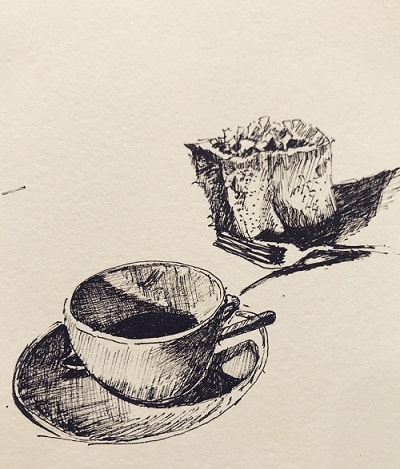
If you are at the café, draw your cup, cake, the jars at the front counter, or people. Whatever you feel like. You will not get bored.
2. Using Pen and wash technique:
If you can take a little bit of a backpack, take a small watercolor set with you. The one comes with a palette and small pans. Just use one brush.
Do more wet on wet technique. Draw with the pen anything, like cups, or beach, or buildings in front of you, and then paint with watercolor. Don’t worry about the paint being everywhere, as these are pens and wash, so your pen marks will define the object, even if your paints are scattered.
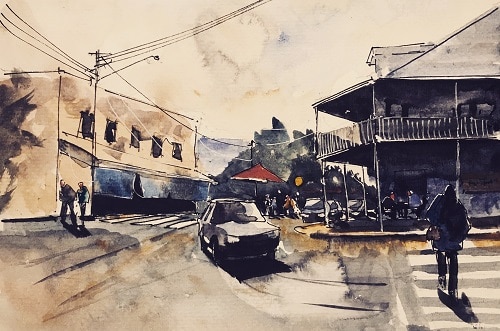
3. Start Plein air painting:
Plein air painting means painting outdoors with all the tools, like an easel etc.
This is the best way to improve your painting. It would dramatically change your style.
But I know what you are thinking. We are not comfortable enough to get outdoor and paint in front of everyone; we are scared of being judged.
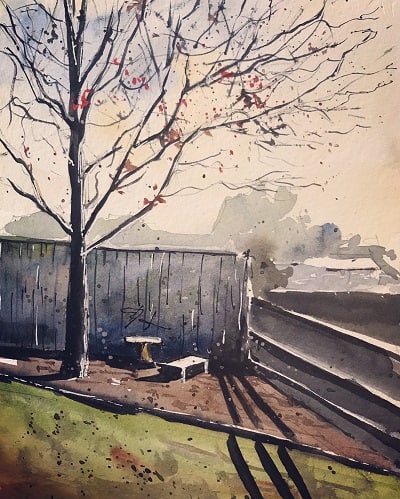
Yes, it is good to be prepared a little bit. For example, learning basic shapes like buildings, cars, boats etc., and then going and painting. You can go in a group. No one would judge you, I promise! Instead, you will see people will give you good comments that will boost your confidence.
Find urban sketcher groups or painting groups in your locality. By doing it, you will be comfortable drawing with similar minded people. You will find some Facebook groups; you can join them.
Art education or workshops to take:
All you will need is passion. You can take workshops from your favourite painter. Workshops are held in groups. Some tourism company also arranges tours and travels where a group of people can go on a tour, and a painting workshop is arranged as a part of the tour.
You can also take some online courses to continue at your own pace. You can access several video tutorials in an online course and do practice for a small course fee or monthly fees.
Sometimes, in your locality, you can join any art club. Art clubs are suitable for practising with similar minded people. They often arrange local Plein air tours for all the members, which I found helpful.
Artists are sometimes alone in their territory. They need to socialize with similar-minded people and exchange their experiences and tips and tricks. that opens the inner eye that takes one to their destination.
